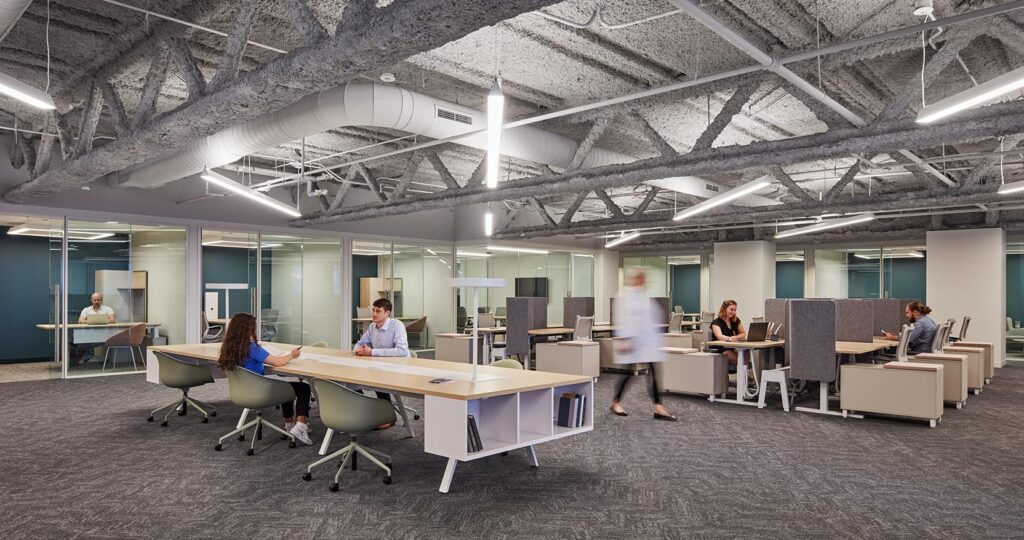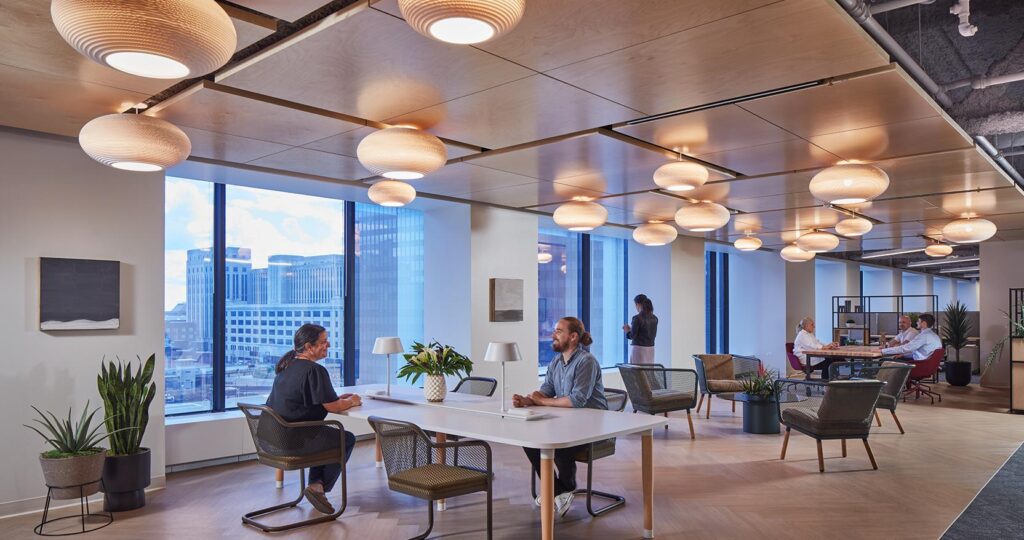
The evolution of the workplace is ongoing
Posted On January 9, 2024
What does the workplace of the future look like?
It may be too soon to know. But one thing seems certain: The workplace of the past is gone.
Our guest in a recent episode of “What’s Working with Cam Marston” was Rebecca Swanner, a Workplace Sector Leader at the massive architectural and engineering design firm HED. While some old-school managers still clamor for their employees to be at their desks like the old days, she says the old days are gone – and they’re not coming back.
“To be successful, we really need to let go of the baggage and the preconceptions about how it was before, and we can’t assume that we’re going to get exactly back to the way we were,” said Swanner, who is based in Los Angeles. “That’s not on the table right now.”
But that doesn’t mean that the office is going away entirely. While many business now use hybrid work schedules that allow employees to work from home for part of the week and in the office for the rest, Swanner says it’s clear that the collaborative atmosphere of a workspace boosts creativity.
 So how does Swanner design workplaces that employees will want to come to?
So how does Swanner design workplaces that employees will want to come to?
It varies from place to place according to needs, but many  offices utilize “free address” workspaces – no assigned desk to each employee – and “neighborhoods,” where a team or department works and collaborates. Some may have central social areas, where employees can gather for team lunches or other activities.
offices utilize “free address” workspaces – no assigned desk to each employee – and “neighborhoods,” where a team or department works and collaborates. Some may have central social areas, where employees can gather for team lunches or other activities.
“There’s a big focus on activity-based design,” she added. “The idea that the workstation is like Inspector Gadget or a Transformer, where it can change and adapt to support all the different things an employee might do throughout the day perfectly, is really setting that space up to fail. So the idea is you have very specifically designed different spaces — a variety — and people can choose and move throughout the day and have different experiences in that space.”
In terms of amenities, Swanner says a big one right now is a concierge – an employee who is there to help remove any barriers workers may have to their productivity.
Swanner added, however, that what works in an office today may soon be obsolete as technology continues to evolve and create new possibilities.
“Hybrid work isn’t seamless, and the only way to make it more seamless is through technology and that technology doesn’t exist yet,” she said. “It’s not realistic that you’re going to design a space today and 30 years from now it’s going to function in the same way.”